Not all cayenne peppers are created equal. In fact, there are some major differences between the different types of cayenne peppers. That’s why we grew 7 different cayenne varieties, to find the best.
We asked our audience which cayenne varieties we should grow for this test, and received many suggestions. We narrowed it down to 7 of the most suggested cayenne peppers to plant in the garden. Now, the results are in.
So, in this article, I’ll share our thoughts on each of the cayenne pepper varieties that were grown and declare a “winner” (at least according to Pepper Geek). Let’s get into it!
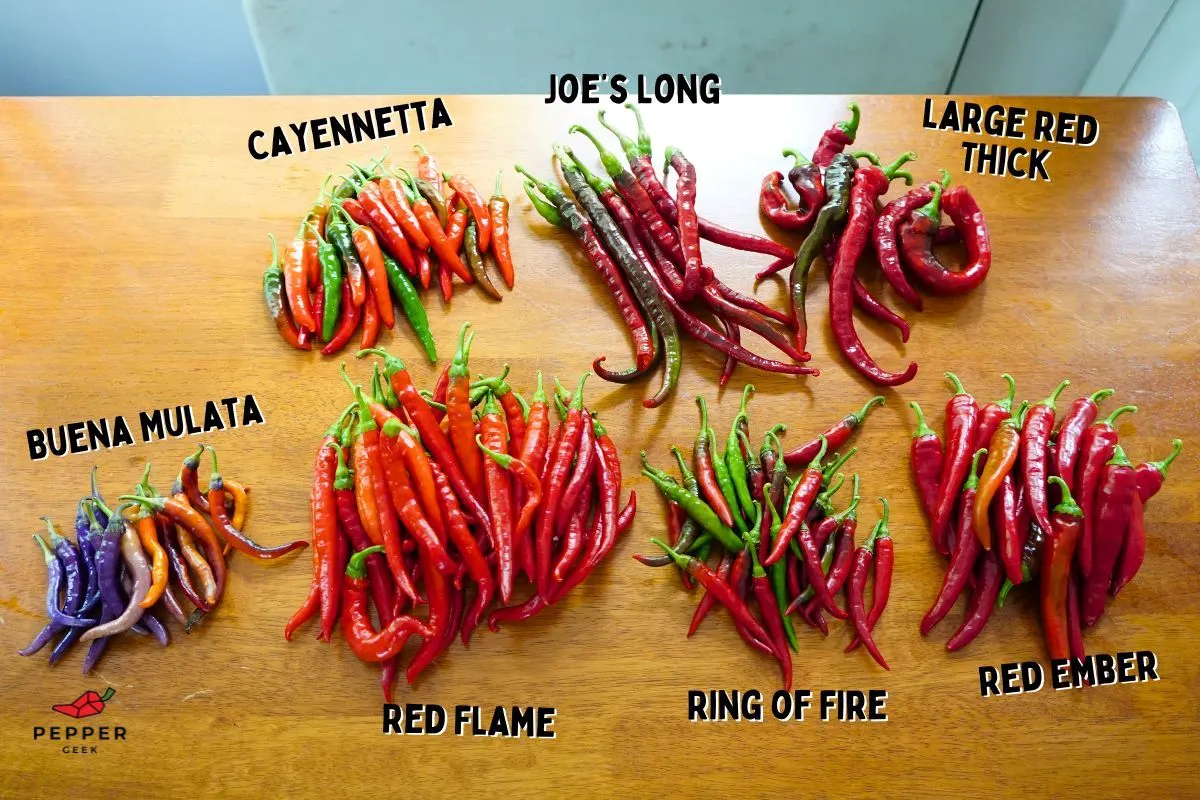
7. Buena Mulata
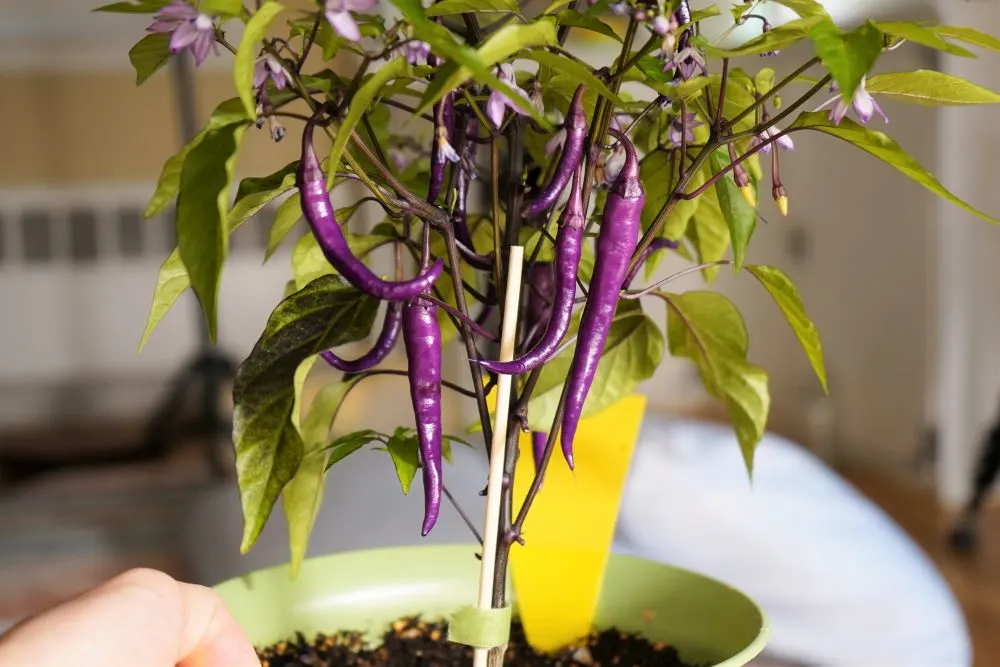
Coming in last place is the buena mulata pepper. While this variety may not have “cayenne” in its name, it is still considered a cayenne in our book.
The overall performance of the plants was underwhelming. Our plants produced lower yields, and took longer to ripen than most other varieties we grew.
Most importantly, the flavor was lacking. Even when fully ripe (red), the buena mulata’s flavor didn’t compare to any of the other varieties grown. That being said, this pepper has its uses, namely it would make a good powder for adding moderate heat to meals.
Flaws aside, this plant produces gorgeous purple peppers that gradually ripen to deep red. So, if you are looking for ornamental value, the buena mulata may be the perfect choice to grow.
6. Large Red Thick
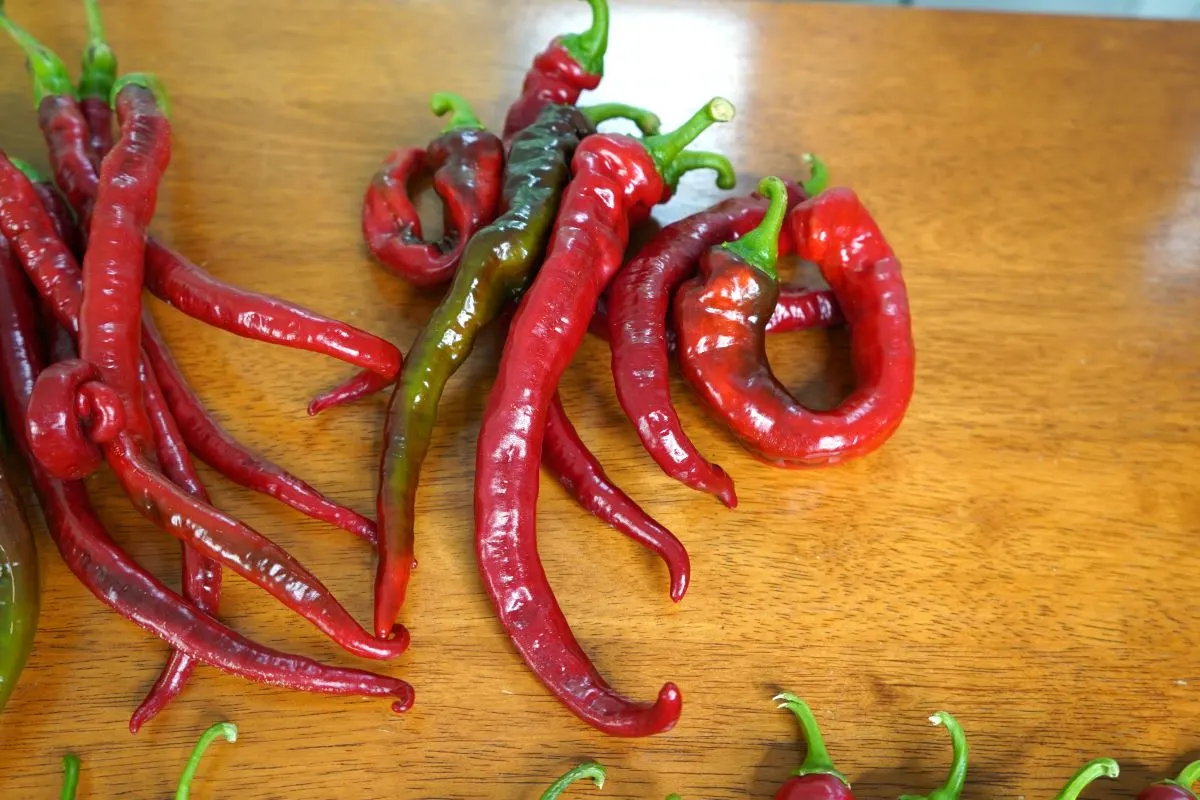
As you may expect, the large red thick cayenne is, well, large. The fruits are long and scraggly, some remaining somewhat straight, while others curl around in a loop.
While they add some whimsy and interest to the garden, the overall yields were still low. Also, many of our fruits had cracks before they had a chance to ripen, making the fruits less usable.
The flavor was very sweet and mellow, without too much bite. These are best for anyone who likes to harvest just a few peppers at a time for fresh eating or cooking. If you want a big yield for making a fermented hot sauce, one of the smaller cayennes will be better.
5. Red Ember
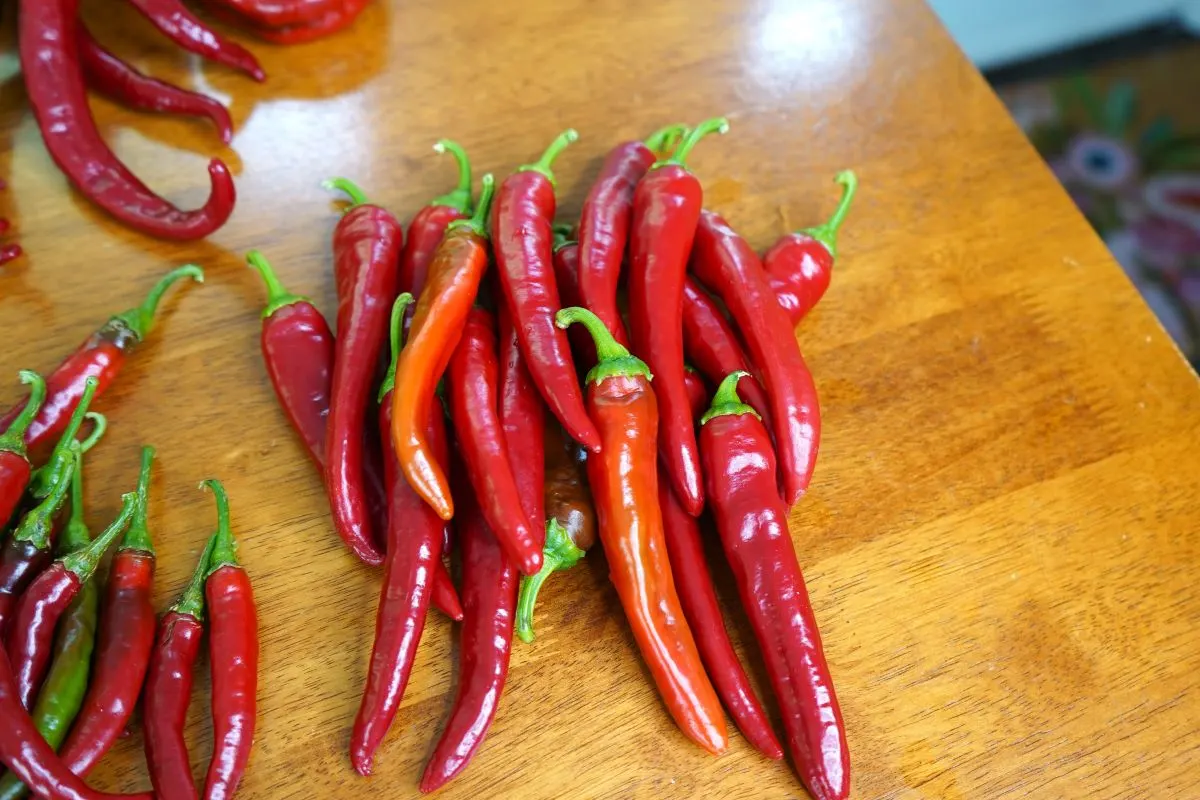
Beyond this pepper, it became harder and harder to rate these cayenne peppers. The red ember hybrid cayenne is a fantastic variety, producing medium-large cayennes with thick walls.
This makes them great for chopping and cooking into dishes like spicy Kung Pao, or making simple hot sauces. The flavor was also good, with a natural smokiness and sweetness.
The fruits are consistent in size, the plants are prolific and compact (great for growing in pots), and the flavor was tasty. Great for making cayenne powder or hot sauces.
4. Joe’s Long Cayenne
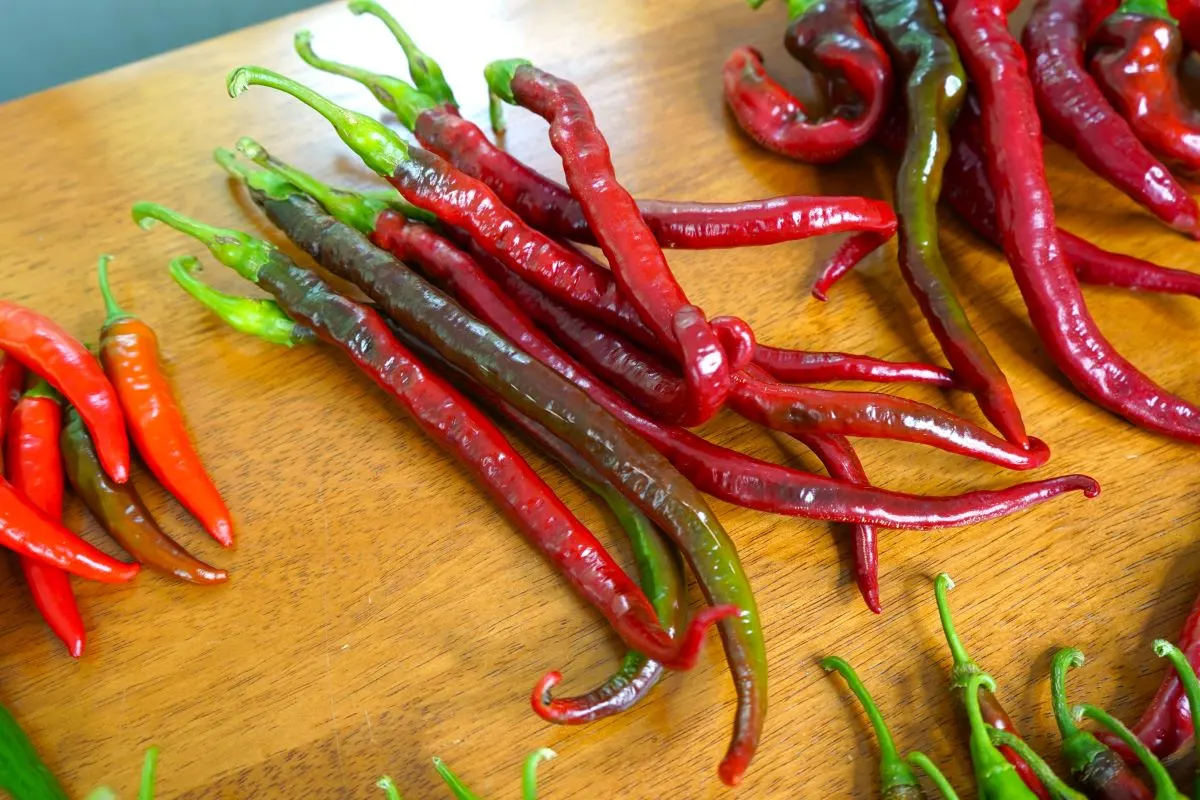
Probably the most fascinating chili pepper on this list is the Joe’s long cayenne. As you can see, the fruits grow to be impressively long, typically around 10-12″ in length. The plants are also tall and sturdy, easily growing to 3-4 feet tall in a single season.
However, unlike the buena mulata, Joe’s long cayenne is not all show. The flavor and heat are both strong, making this pepper highly useful in the kitchen.
The only drawback we saw was some blossom end rot on a few peppers. However, this was easy enough to cut off, and many of the fruits had no issues whatsoever.
3. Red Flame
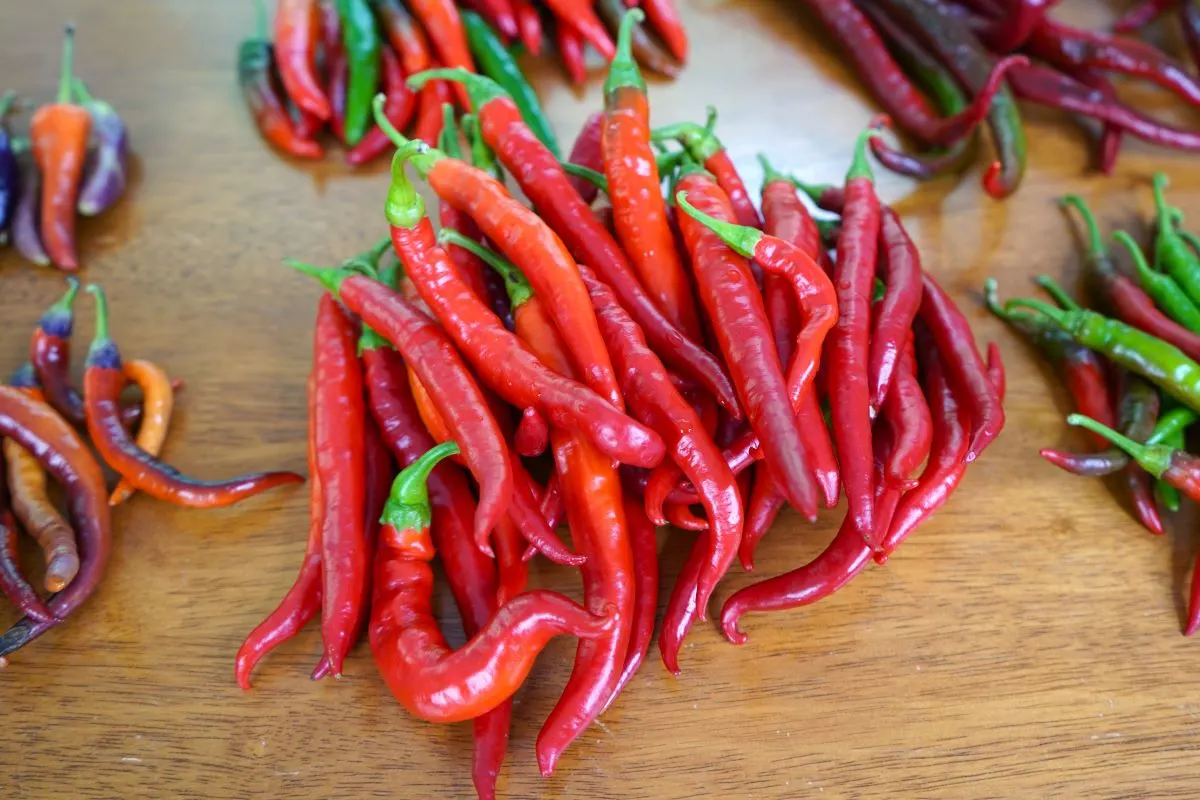
Our bronze medal goes to the red flame hybrid cayenne pepper. This plant was the most impressive of the bunch when it came to harvest, pumping out an endless supply of 5-6 inch bright red cayennes.
The peppers are consistent in shape and size, and the plants are compact and productive. Also worth noting, the plants were extremely healthy and disease resistant. This means that you can count on this variety to produce for you, even if you typically get disease in the garden.
While this is a hybrid, the flavor was still good, especially when the peppers are fully ripened to red. Try picking them as soon as they mature for the best heat and flavor.
2. Ring Of Fire
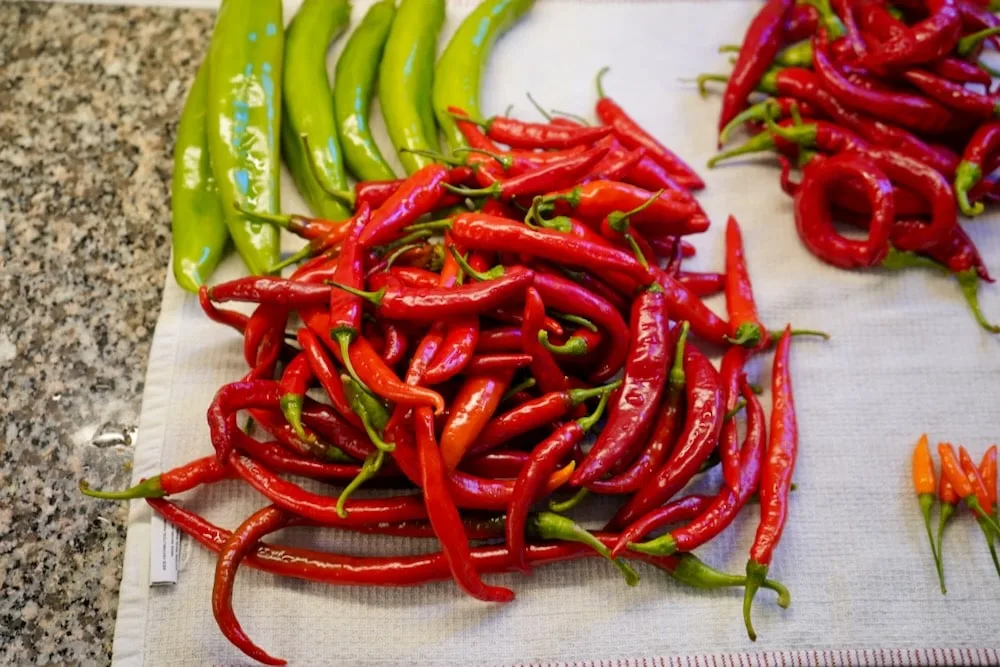
Our runner up was the ring of fire cayenne. As the name might suggest, this was the spiciest cayenne variety that we tested, with a Scoville rating around the 50,000 SHU mark.
While we were a bit divided on flavor (I found it to be slightly soapy, while Crystalyn loved it), the overall usability is undeniable. These would be great for making hot sauce, adding to curries, and of course for homemade chili flakes.
If you want the hottest cayenne variety, this is likely it. Ring of fire has a loyal group of followers who add it to their garden every season, and we now understand why.
1. Cayennetta

At the end of the day, you want a cayenne pepper that can do it all, and that’s exactly what we found with the cayennetta hybrid. These peppers grow on beautiful compact plants, have an amazing flavor that stood out from the rest, and is the perfect shape and size.
Our 2 cayennetta plants were both the perfect shape and size, around 2 feet tall and wide. The leaves were small, but the canopy was thick and dense, shading all of the peppers below. We couldn’t pick these peppers fast enough – it seemed like every week we had a new batch of ripe chilies.
The main problem we had was with disease (bacterial leaf spot), which affected the leaves, but not the peppers themselves. Despite this, the plants were some of the most productive of all.
It’s no wonder the cayennetta won an AAS award in 2012, for its addictive flavor, gorgeous plant shape, and overall reliability in the garden. I highly recommend this variety, especially for container gardeners, but for in-ground growers too.
Watch Us Taste Test 7 Cayennes (Video):
Hopefully, you can try growing some of these cayenne peppers in your own garden! It is always fun to add a new variety to your garden lineup, and a cayenne is always a safe bet.


David Niemi
Sunday 21st of January 2024
Bacterial brown spot affects many types of plants and even large trees in sustained wet, warm weather. But in 2018 (by far the rainiest year on record in my location) my peppers were still productive, while tomatoes and green bean plants (even ones that are specifically resistant to it) got killed by it. So if that's what your Cayenetta plant had, it's the weather's fault. I'm trying a different (open-pollinated) Cayenetta this year, hope it is similar to yours. For peppers, I prefer open pollinated and heirloom cultivars, while for tomatoes (which are much more vulnerable to diseases) I am moving to mostly F1 hybrids.
Lindsey
Sunday 21st of January 2024
I wish I could find Cayenetta in Canada but I can't.
I also wish you would rate the 2 varieties that I do grow in order to compare them to your line up of cayennes.
I have grown Super Cayenne for decades. I added Arapaho last year.
Super Cayenne are smaller with good heat and more thin walled so are great for drying. Just string them up, no dehydrator needed. I find a bit of a bitter taste if my fermented hot sauce has too many of them though.
Arapaho is big and thick walled. I only grew the one plant in my greenhouse. Yield was moderate but I found them not as hot, I think I am a wus though and don't just pop them in my mouth to test them. I nibble a wussy bit instead. What can I say, YOU try them for me. LOL
David Niemi
Wednesday 24th of January 2024
@Lindsey I got Cayennetta seeds from Tyler Farms (California). I had the impression they were open pollinated.
I have also been growing Burpee's "Big Thai" for years, which seems to me just like a typical Cayenne, maybe a little longer than average and very productive late in the season. Similar growth pattern and heat level to other Cayennes. I think taste tests are needed to see where it really fits in the hierarchy and whether it's really a Cayenne or something else.
Jon Suddith
Sunday 21st of January 2024
Of the 7 on your list, I have only ever grown Buena Mulata. Like you say, it didn't have much heat, but is an extremely pretty pepper! 2 varieties that I really like are Maule's Red Hot & Rooster Spur...